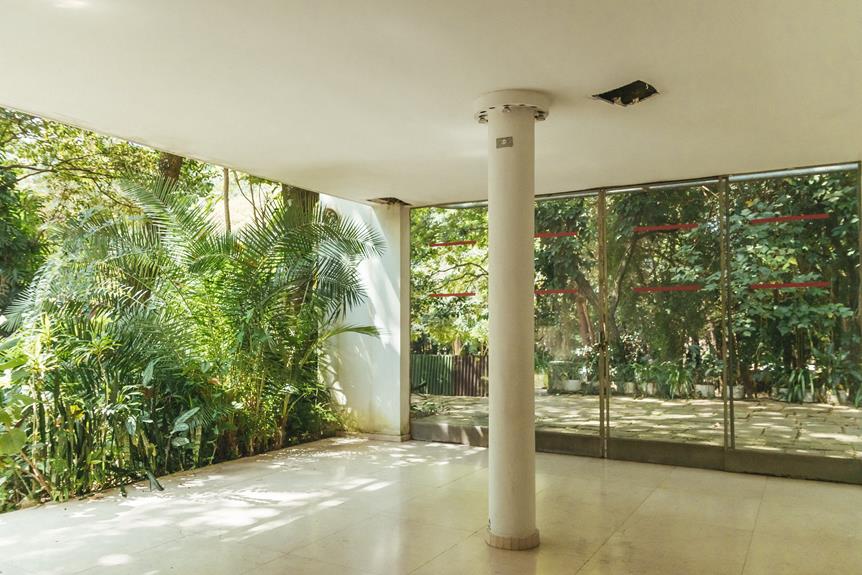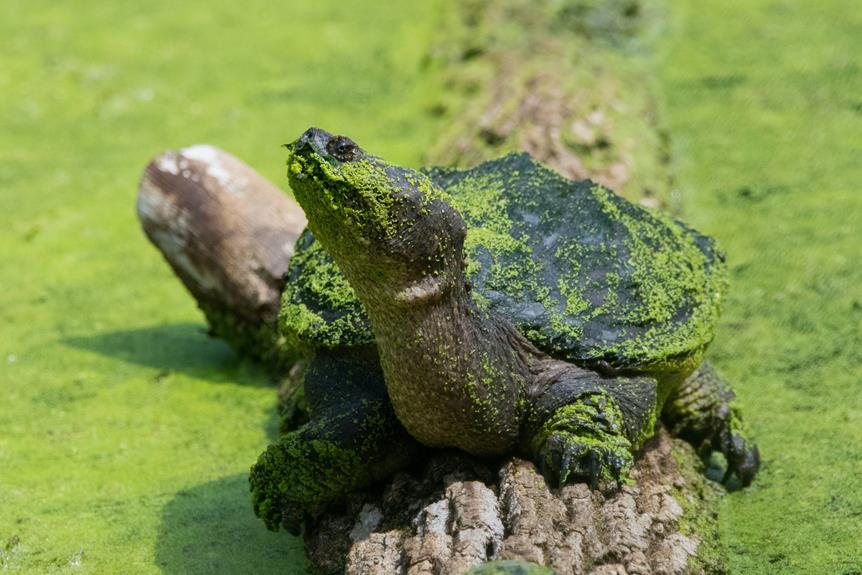Understanding the nuanced growth patterns of Java Fern in aquatic environments is a matter of keen interest for those dedicated to fostering verdant underwater landscapes.
While Java Fern is renowned for its gradual development, there exists a realm of possibilities to potentially expedite its growth trajectory.
By strategically manipulating environmental variables such as lighting intensity and nutrient supplementation, enthusiasts can aim to unlock the secrets behind accelerating the growth rate of Java Fern.
The delicate balance between fostering rapid growth and maintaining plant health poses a fascinating challenge worth exploring further in the pursuit of flourishing aquatic ecosystems.
Key Takeaways
- Balance CO2 levels, nutrients, and light for accelerated Java Fern growth
- Ensure optimal water quality and pH levels to support healthy leaf development
- Provide full spectrum light with proper intensity and duration for enhanced photosynthesis
- Supplement with CO2 and fertilizers for robust root systems and faster leaf growth
Factors Affecting Java Fern Growth
Factors influencing the growth of Java Fern encompass a combination of environmental conditions, nutrient availability, and cultivation practices that collectively contribute to the plant's developmental trajectory.
Growth acceleration in Java Fern can be stimulated by ensuring optimal nutrient availability. This plant primarily requires essential nutrients like nitrogen, potassium, and phosphorus for healthy growth. Iron and micronutrients are also crucial for promoting robust leaf development and vibrant coloration.
Additionally, maintaining appropriate water parameters, such as pH levels and hardness, is vital for sustaining optimal nutrient uptake by the Java Fern. By meticulously managing these nutrient requirements and environmental factors, aquarists can effectively support the growth and vitality of their Java Fern specimens.
Understanding Java Fern Growth Rate
Understanding the growth rate of Java Fern involves a comprehensive analysis of the plant's developmental timeline and the key factors that influence its speed of maturation within an aquatic environment.
Java Fern exhibits distinct growth patterns characterized by slow but steady development. The plant typically takes up to a year to reach its full height range of 6 to 13 inches, with one new leaf emerging weekly on existing clumps.
To support optimal growth, Java Fern has specific nutrient requirements, including essential elements like iron, potassium, and phosphorus. Additionally, maintaining a balanced CO2 level in the tank can enhance growth rates.
Types of Java Fern Varieties
Among the Java Fern varieties available to aquarists, there are four distinct types, each characterized by unique growth rates and size specifications. Below is a comparison table detailing the different Java Fern varieties:
| Java Fern Variety | Growth Rate Factors | Size |
|---|---|---|
| Narrow-Leaf | Moderate | Up to 13" |
| Needle Leaf | Slow | Up to 6" |
| Trident | Moderate | Similar to Narrow-Leaf |
| Windelov | Fast | Up to 8" |
These varieties showcase differences in growth rates and ultimate sizes, providing aquarists with options to choose the most suitable Java Fern for their aquarium setup.
Enhancing Java Fern Growth With Light
To optimize the growth rate of Java Fern, the intensity and duration of light exposure play a crucial role in promoting its development within an aquarium setting. When enhancing Java Fern growth with light, consider the following:
- Light Spectrum: Providing a full spectrum light source that includes blue and red wavelengths can enhance photosynthesis and overall growth.
- Photoperiod Adjustment: Maintaining a consistent light cycle of 8-10 hours per day mimics natural conditions and supports healthy growth.
- Light Intensity: Aim for moderate to high light intensity levels to ensure sufficient energy for photosynthesis and growth.
- Light Placement: Position the light source at an appropriate distance from the Java Fern to prevent burning while maximizing light absorption.
Water Quality and Java Fern Growth
The quality of water in an aquarium plays a critical role in influencing the growth rate of Java Fern. Water quality impacts nutrient availability, which in turn affects the plant's growth and leaf development. Nutrient deficiency can lead to stunted growth and unhealthy leaves. Ensuring the right balance of nutrients in the water is essential for optimal Java Fern growth. Below is a table highlighting key factors related to water quality and their impact on Java Fern growth:
| Water Quality Factor | Impact on Growth Rate |
|---|---|
| pH Levels | Affects nutrient absorption |
| Water Hardness | Influences leaf development |
| Ammonia Levels | Toxic to plant growth |
Maintaining these water quality parameters within appropriate ranges is crucial for promoting healthy and robust Java Fern growth.
Importance of CO2 for Java Fern
Optimizing the carbon dioxide (CO2) levels in an aquarium is essential for promoting the healthy growth and development of Java Fern (Microsorum pteropus).
- CO2 importance: CO2 is a crucial element for photosynthesis, the process by which plants produce food and energy. Adequate CO2 levels ensure that the Java Fern can grow efficiently.
- Growth: CO2 supplementation can significantly accelerate the growth rate of Java Fern, aiding in the development of new leaves and the overall size of the plant.
- Apomixis reproduction: Java Fern reproduces through apomixis, where the plant can produce offspring without the need for fertilization, making CO2 even more critical for its growth and propagation.
- Propagation: Proper CO2 levels support the propagation of Java Fern, ensuring healthy offspring and robust growth.
Fertilizers for Accelerating Growth
How can the strategic application of fertilizers enhance the growth rate of Java Fern in an aquarium setting?
The growth stimulants present in fertilizers play a crucial role in promoting robust root systems, which are essential for nutrient absorption and overall plant health.
Fertilizers rich in nutrients such as phosphorus can significantly aid in leaf development, leading to faster growth rates in Java Fern.
By providing the necessary elements for photosynthesis and cellular growth, these fertilizers can accelerate the growth process of Java Fern, resulting in denser and healthier foliage.
Ensuring a balanced and targeted application of fertilizers can optimize the growth potential of Java Fern in the aquarium environment.
Tank Mates Selection for Java Fern
When considering suitable tank mates for Java Fern in an aquarium environment, compatibility with the plant's growth requirements and behavior patterns is paramount. Here are some key points to consider:
- Tank mate compatibility: Choose fish species that are peaceful and won't disturb the Java Fern's delicate rhizome system.
- Growth rate comparisons: Opt for fish that prefer similar water conditions to the Java Fern, avoiding species that may outcompete the plant for nutrients.
- Avoid herbivorous species: Select tank mates that won't nibble on the Java Fern leaves, causing damage and hindering growth.
- Bottom-dwelling species: Consider adding bottom-dwelling fish that won't uproot the Java Fern when foraging, helping to maintain the plant's attachment to surfaces.
Attachment Process of Java Fern
Understanding the intricate process of Java Fern attachment is crucial for ensuring its successful integration into an aquatic environment. Java Fern typically takes 3 to 6 months to attach securely to a substrate, such as wood or rock. This process is essential for the plant's stability and growth. Below is a table highlighting the attachment process details and benefits, along with propagation techniques and care requirements:
| Attachment Process | Benefits |
|---|---|
| Securely attach to substrate | Provides stability for growth |
| 3-6 months duration | Ensures long-term integration |
| Propagation through rhizome division | Allows for easy multiplication |
| Requires low to medium light | Thrives in various tank conditions |
Trimming Tips for Java Fern
Trimming Java Fern is a vital maintenance practice that promotes healthy growth and prevents overcrowding in aquariums. To ensure effective trimming, consider the following techniques and growth inhibitors:
- Trimming Techniques:
- Use sharp, sterilized scissors to avoid damaging the plant.
- Cut older or damaged leaves at the base of the rhizome to encourage new growth.
- Trim roots if they become overgrown to prevent them from robbing nutrients.
- Remove any black or brown spots promptly to prevent the spread of disease.
- Growth Inhibitors:
- Overcrowding can hinder growth, so thin out dense areas.
- Avoid using copper-based medications in the tank, as they can inhibit Java Fern growth.
- Ensure water parameters are stable to prevent stress that can impede growth.
- Regularly check for algae growth, as it can compete with the Java Fern for nutrients and light.
Frequently Asked Questions
Can Java Fern Grow in Brackish Water Conditions?
Java Fern can survive in brackish water conditions to some extent due to its saltwater adaptation capabilities. However, prolonged exposure to brackish water may have adverse effects on its growth and overall health.
How Long Does It Take for Java Fern to Show Signs of Nutrient Deficiency?
Nutrient deficiency symptoms in Java Fern typically manifest after 4-6 weeks without proper nutrients. The plant shows stunted growth, yellowing or browning of leaves, and reduced vigor. Factors affecting growth include lighting, fertilization, CO2 levels, and water quality.
Are There Any Predators or Pests That Commonly Affect Java Fern Growth?
Natural predators of Java Fern include fish like goldfish and cichlids that may consume or damage the plant. Common pests such as snails, especially Ramshorn and Malaysian trumpet snails, can also harm Java Fern by grazing on its leaves.
Does Java Fern Have Any Specific Temperature Requirements for Optimal Growth?
Java Fern thrives in tropical temperatures of 68-82°F for optimal growth. Adequate lighting, water hardness, and CO2 supplementation are critical factors. Propagation through rhizome division or spores aids in expansion.
Can Java Fern Be Grown Emersed (Above Water) for Faster Growth Rates?
Emersed propagation of Java Fern can potentially enhance growth rates by providing direct access to atmospheric CO2. Growth hormone applications may further stimulate development. However, close monitoring of environmental conditions and transition phases is crucial for successful cultivation.
Conclusion
In conclusion, the growth rate of Java Fern is a gradual process that can be influenced by various factors such as lighting, water quality, and fertilization.
By understanding the nuances of Java Fern cultivation and implementing strategies to optimize conditions, aquarists can potentially expedite the growth trajectory of this aquatic plant.
Like a meticulously crafted masterpiece, Java Fern's growth can be likened to a slow and deliberate painting, with each adjustment serving as a brushstroke towards achieving its full potential.





